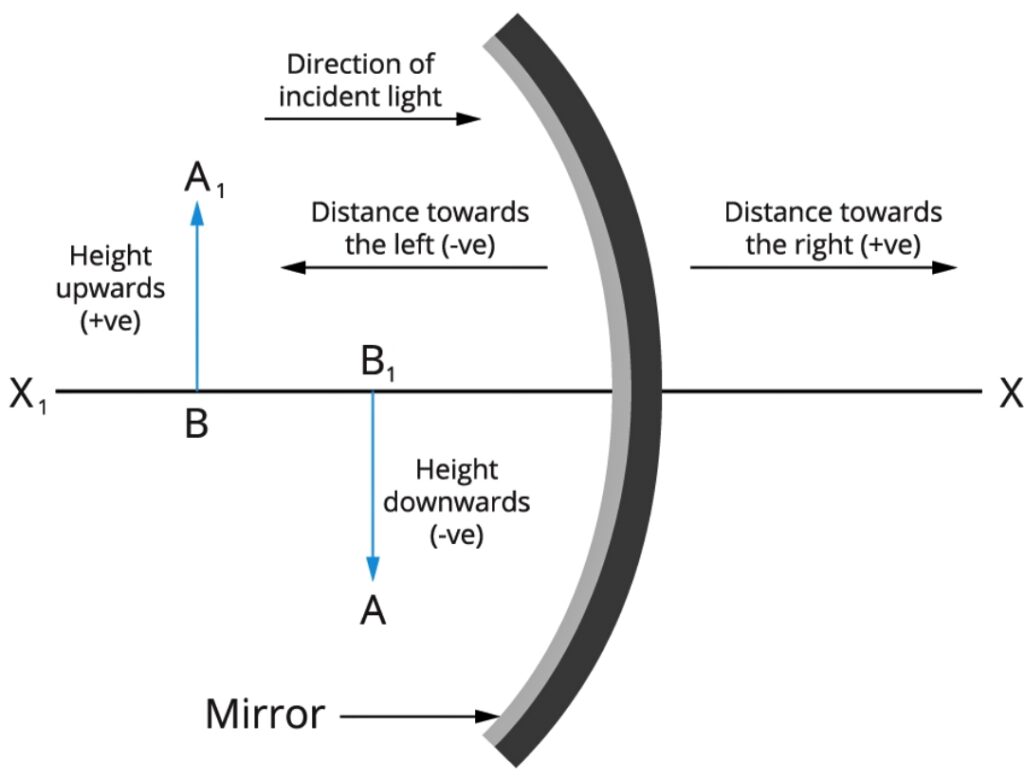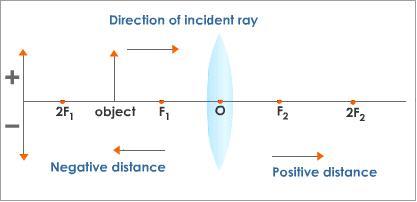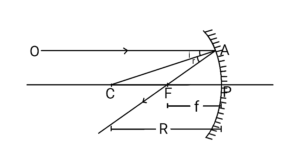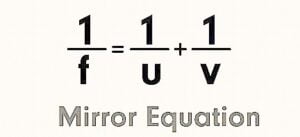Definitions regarding spherical mirrors.
Pole :- The geometric centre of a spherical mirror is called its pole. Denoted by ‘P’
Principal axis :- The line joining the pole and centre of curvature of the spherical mirror is known as the principal axis.
Centre of curvature :- the point in the centre of the sphere from which the mirror was sliced is known as the centre of curvature and is denoted by ‘C’
Radius of curvature :- the distance from the vertex to the centre of curvature is known as the radius of curvature and is denoted by R’
Focus :- It is the point where light rays originating from a point on the object converge. Denoted by ‘F’
Focal length :- It is the distance between the pole and focus of a mirror and is denoted by ‘f’
Aperture :- it is the entire area of the reflecting surface of the spherical mirror.
Sign convention :-


To derive the relevant formulae for reflection by spherical mirrors and refraction by spherical lenses. we must first adopt a sign convention for measuring distances.
According to the sign convention –
- All distances are measured from the pole of the mirror or the optical centre of the lens.
- The distances measured in the same direction as the incident light are taken as positive and those measured in the direction opposite to the direction of incident light are taken as negative.
- The heights measured upward with respect to x – axis and normal to the principal axis of the mirror or lens are positive. The height measured downwards are taken as negative.
According to the sign convention –
A. The radius of curvature ‘R’ and focal length ‘f’ of the concave mirror are negative.
B. The radius of curvatue and focal length of the convex mirror are positive.
C. Focal length of concave lens is negative.
D. Focal length of convex lens is positive.






